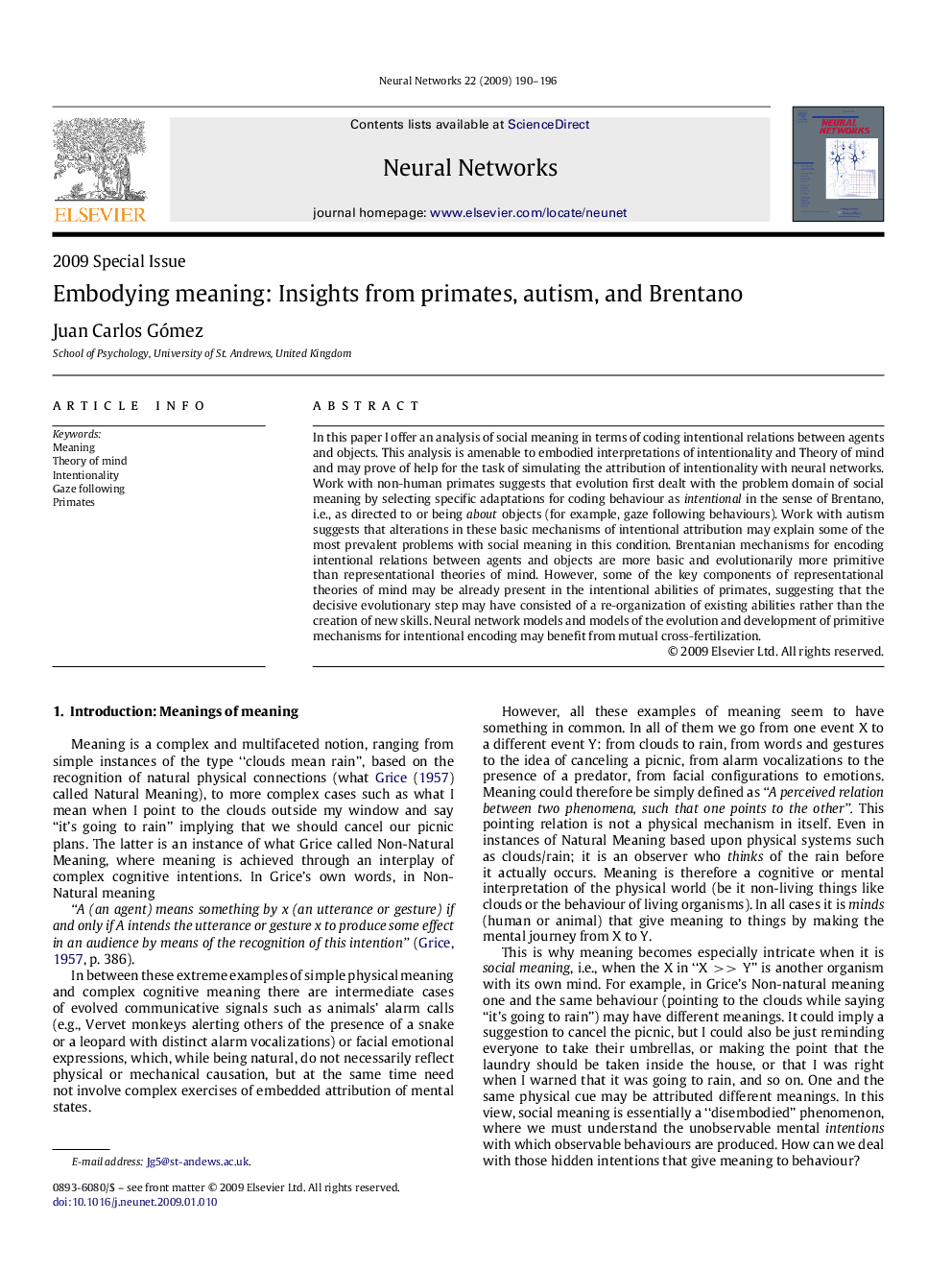| کد مقاله | کد نشریه | سال انتشار | مقاله انگلیسی | نسخه تمام متن |
|---|---|---|---|---|
| 405633 | 677696 | 2009 | 7 صفحه PDF | دانلود رایگان |

In this paper I offer an analysis of social meaning in terms of coding intentional relations between agents and objects. This analysis is amenable to embodied interpretations of intentionality and Theory of mind and may prove of help for the task of simulating the attribution of intentionality with neural networks. Work with non-human primates suggests that evolution first dealt with the problem domain of social meaning by selecting specific adaptations for coding behaviour as intentional in the sense of Brentano, i.e., as directed to or being about objects (for example, gaze following behaviours). Work with autism suggests that alterations in these basic mechanisms of intentional attribution may explain some of the most prevalent problems with social meaning in this condition. Brentanian mechanisms for encoding intentional relations between agents and objects are more basic and evolutionarily more primitive than representational theories of mind. However, some of the key components of representational theories of mind may be already present in the intentional abilities of primates, suggesting that the decisive evolutionary step may have consisted of a re-organization of existing abilities rather than the creation of new skills. Neural network models and models of the evolution and development of primitive mechanisms for intentional encoding may benefit from mutual cross-fertilization.
Journal: Neural Networks - Volume 22, Issue 2, March 2009, Pages 190–196